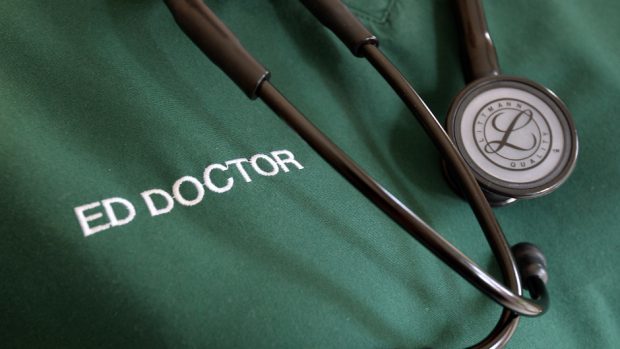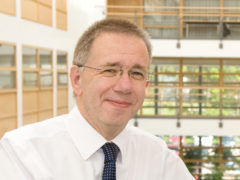There is a road in Applecross in the north-west Highlands called Bealach na Bà, which twists, winds and climbs to more than 2,000ft above sea level, making it the greatest ascent of any road climb in the UK. With a gradient approaching 20% in some places, its narrow, sharp bends have seen it dubbed the UK’s toughest climb.
The reward for taking it on? Some of the most breath-taking scenery on these shores. But boy, does that road make you pay for the privilege.
Along with a team of colleagues from Aberdeen University and NHS Grampian, I had the dubious pleasure of pitting my cycling skills against this notorious route back in May, as we tackled the North Coast 500 as part of our bid to raise £4.5 million to install a world-class cancer research team in the north-east.
Sadly, we weren’t able to enjoy the full splendour of the peninsula’s views for long, as by the time we reached the summit, the cloud had descended and the wind had picked up, making conditions pretty unpleasant.
Despite the pain of the effort, our 20 riders, aided by our fantastic support team, managed to complete the task without injury – the only exception being the slight bump I received myself at the summit when a massive gust of wind blew me off my feet while taking a selfie at the cairn with a friend.
As one of the people responsible for training the doctors who may well go on to serve the regions we were cycling through, diversity is a topic that’s often on my mind. There are some schools in these regions that have never sent a pupil to medical school, and that is something we are working tirelessly to change.
Why? The shortage of GPs in this country is well-documented. The way things are going, villagers in some of these beauty spots may soon have to travel far from their homes to see a doctor.
But we know that if we can attract school pupils from these areas to study medicine, there’s a higher chance they will come back and work here as doctors. It’s our best chance of addressing the problem.
A large part of the challenge is simply getting through to all kids – from Alness to Wick, Fraserburgh to Portlethen – to tell them: “Yes, you can study medicine. You can be a doctor.”
If we can create a culture where it’s not unusual for pupils to go to medical school, then it will attract others to follow suit. To that end, we have worked really hard to create novel ways of attracting students.
One such programme – run in conjunction with NesCol and NHS Grampian, and called Gateway 2 Medicine – has for two years offered a chance for 20 students who never before had the opportunity or even the inclination, for whatever reason, to study medicine.
We also know that due to teaching issues, especially in the Highlands, some school pupils don’t get the opportunity to study Higher chemistry. To address this, we now accept students to medicine who don’t have chemistry as a Higher, and instead get them up to speed once they arrive.
We have also run a programme that sees a group of first-year medical students given a two-day taster of living, working and relaxing in rural parts of north and north-east Scotland. Demand for places on the course outstrips supply, which shows there is a real enthusiasm for working and living in these areas.
Some say the limited spaces we have for Scottish medical students (whose numbers are capped by the Scottish Government) should go to those with the best grades, regardless of where they come from or their background.
It is important to remember the job of Aberdeen University’s medical school, and all medical schools across the country, is to select and train doctors who will go on to meet the needs of our society. Currently, we are in desperate need of more GPs, and more specifically, GPs who will go on to work in rural areas, so it makes complete sense that this is where we focus our efforts.
We know that it’s not just getting the best academic grades in examinations that makes the best doctor. We also take into account the full background of a person in relation to the grades they have achieved. Of course, good grades are a hugely important factor when it comes to accepting students onto our courses, but it is not the only factor – especially when we’re talking about people who must identify and provide the most vital care for people from a wide range of different backgrounds.
It’s also worth noting recent research from my colleague Professor Jen Cleland, who found that across the UK, medical students from state schools are nearly twice as likely to graduate in the top 10% of their class as students from independent schools – despite independent school students, on average, scoring higher in their medical school entry tests.
I hope next time I cycle this route (and I vow to myself I will) I am optimistic that I will be able to pass through many more towns and villages in this region that have sent students to our medical school.
Professor Steve Heys is the head of Aberdeen University’s School of Medicine, Medical Sciences and Nutrition, and a breast cancer Surgeon.











